#call my name monograph
Text
Hannibal Dashboard simulator!
🐕dogsandflyfishing
This my new dog. Everybody, meet Winston.

No, I did NOT steal him. He was a stray.
And here are the others:

(Except for Zoe, she does not like to have her picture taken)
#dogs
🐈⬛ teamsassyscience <- -> reblogged
Aw, your puppies are adorable.
137 notes

🍷are-we-not-made-in-his-image
I would like to share this interesting article I came across.
The Standard Monograph on Time of Death by Insect Activity by Professor Will Graham
_______________________Keep Reading
659 notes

😷autopsyguy
Can you guys help me end a debate between me and my colleague, @iwishididn'thaveatwin.
🐈⬛ teamsassyscience <- -> reblogged
Guys, I thought we settled this weeks ago...
🔍iwishididn'thaveatwin <- -> reblogged
The definition of the word 'prey' is: An animal that is hunted and killed by another for food. Deer and elk do NOT eat them, therefore they are not prey.
😷autopsyguy <- -> reblogged
Get your own post, Jimmy.
1,708 notes

🐕dogsandflyingfishing
😶🌫️Anonymous asked:
Hi! Sorry to bother you, but I noticed some of your posts and your url, and I was wondering if you have any advice for fly fishers? I think I've made my lures all right, but I can't catch anything.
My advice is name it after someone you cherish. If they cherish you back, then you'll catch something. It's worked for me.
17 notes

🔥Sponsored
Chordophone String Shop
Genuine catgut strings imported from Italty.
Violin and cello lessons available.
Specialists for piano and harpsichord rewiring.
_______________________Learn More

📸tattlecrime-official
It Takes One to Know One
The FBI isn't just hunting psychopaths, they're headhunting them, too, offering competitive pay and benefits in hopes of using one demented mind to catch another. Sure, we're familiar with the stereotype of the FBI profiler, swaggering onto a crime scene, fitting the pieces together like a master puzzler with his 1000-piece jigsaw. In reality, profilers should be likened to harridans reading a cup of spent tealeaves- passing off their active imagination as incisive fact.
To read the rest of the article, click the link Here.
🍷are-we-not-made-in-his-image <--> reblogged
@tattlecrime-official I believe we had a very serious discussion on this matter. I am very disappointed that you decided to ignore it. You have been naughty.
📸tattlecrime-official <--> reblogged
@are-we-not-made-in-his-image Freedom of the press and speech. If I truly couldn't write about it, I'd be sitting in jail right about now. Mind your own business.
328 notes

🐕dogsandflyingfishing
🐈⬛teamsassyscience asked:
Can we please see a picture of Zoe?
Fine.

47 notes

🍷are-we-not-made-in-his-image
🧀tyromancy-is-fun asked:
I noticed you recently posted a picture of Jose's in reference to a recipe and I was wondering how you liked the place. Isn't it the best?
I am aware this is an alternate account for @the-real-franklyn-froideveaux and I would like to ask you once again to please refrain from following me or interacting with me on social media. It is not appropriate. Thank you. I will be blocking your account after this.
9 notes

💀fawn-in-the-forest deactivated 9-13-2014

Me and Dad on a hunting trip.
3,769 notes
#i spent way too much time on this#dashboard simulator#feel free to add on#nbc hannibal#hannibal#will graham#hannibal lecter#abigail hobbs#beverly katz#brian zeller#jimmy price#franklyn froideveaux
115 notes
·
View notes
Note
What do you mean by an ishtar type goddess
I’ve picked this term up from Gary Beckman’s late 1990s articles Ištar of Nineveh Reconsidered and The Goddess Pirinkir and Her Ritual from Hattusa (CTH 644). In both of them he makes a point that across the “cuneiform world” (so, in modern terms roughly from the middle of Turkey to the west of Iran) multiple deities could be designated by the same logogram - IŠTAR, to be specific - and that this broadly reflects all of them having certain shared features , and indicates the existence of a category encompassing all of them in the imagination of ancient theologians. At the same time, he stresses that each of such deities will also have unique features which become evident when enough sources become available. He demonstrated it on examples like Shaushka, Pinikir and the Kizzuwatnean “goddess of the night” (the correct reading of her own name remains unknown).
As far as I know Beckman was more or less the first to advance views like that equally successfully, but other studies using a similar methodology soon followed. For example Barbara Nevling Porter has managed to prove in the early 2000s that it is safe to say there are multiple fully distinct goddesses named Ishtar in Neo-Assyrian sources, and that they could even be portrayed interacting with each other (see her Ishtar of Nineveh and Her Collaborator, Ishtar of Arbela, in the Reign of Assurbanipal for more details).
These views are fairly mainstream today, though popular understanding very clearly lags behind. Tonia Sharlach in her excellent Ox of One’s Own. Royal Wives and Religion at the Court of the Third Dynasty of Ur (a fantastic book even if you’re not very interested in Mesopotamia) calls the names Inanna and Ishtar “umbrella terms” (p. 269). Spencer L. Allen dedicated an entire monograph to the phenomenon of one name often designating multiple functionally fully separate deities, The Splintered Divine. A Study of Ištar, Baal, and Yahweh. Divine Names and Divine Multiplicity in the Ancient Near East. There are numerous other examples, but these are what I’d consider the best introduction.
The classification of (some) deities as exemplars of bigger “types” is not limited to Ishtar(s) and is overall fairly standard in Assyriology, see ex. the discussion here, pp. 298-299. The precedents for this sort of systematization are quite common in primary sources. We know that the scribes employed by the Ur III court essentially saw Ninisina as a “type” since despite the two being distinct, Gula could be referred to as “Ninisina of Umma” by them. God lists will sometimes have entries like “Enlil of Subartu” or “the Kassite Adad” and so on. “Type” is just the term I’m used to because Beckman was my introduction to this idea but I’ve also seen phrases like “Nergal figure”, “lesser Nergal” etc. employed by Frans Wiggermann, for instance.
28 notes
·
View notes
Text
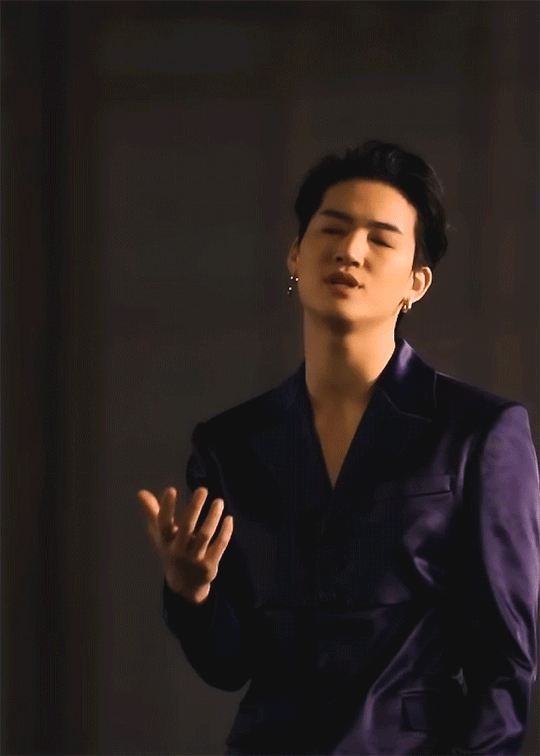



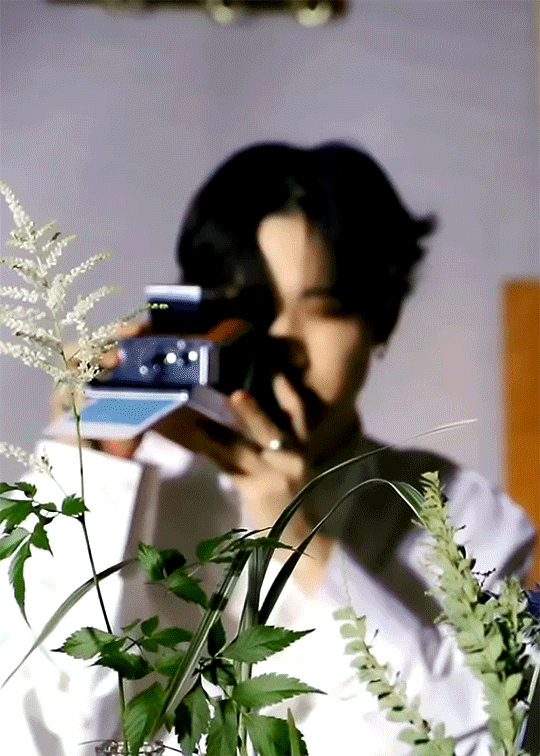

JAY B in GOT7 MONOGRAPH "Call My Name" EP.04, for anon
+ bonus jaebeom monitoring himself:

#jay b#jaebeom#gotdaily#kpopco#dailybg#fyiedit#malegroupsnet#mgroupsedit#kpopccc#ultkpopnetwork#kpopedit#ceeblr#userjoanna#rosieblr#.mine
168 notes
·
View notes
Text
Ever since hearing about/watching the 2021 Awdry Christmas lecture, I’ve been thinking about how Awdry’s notes refer to Duke as both a “he” and “she.”
In my headcanon/AU, I imagine Duke hearing that typo. Maybe it’s in a monograph that’s going around. Maybe it’s still a YouTube video in that universe, streamed on a laptop for the SKR’s engines. Regardless of how, Duke blinks at being called a “she.”
The others ask if it bothers him. He tells the truth: no, it doesn’t. There’s no harm behind it. “It was simply an accident,” he says. Yet he feels a pang in his cylinders.
Soon, he realizes that he didn’t want it to be an accident.
All his life, Duke assumed that he was only a “he.” His builders and managers told him so. He did feel like a “he” a lot of the time, and he didn’t have the space or energy to probe any deeper on the MSR.
But he’s on the SR now. He knows nobody’ll kick up a fuss, trusts everyone here. So he asks them all to call him a “she” some days — on days when “he” doesn’t settle quite right.
And it feels wonderful. It’s the same joy she felt when Stuart and Falcon called her Granpuff for the first time. “I’m not one for sentimentalities,” she says one evening, “but I truly feel… fuller, in a sense.”
Later, Rheneas and Rusty suggest the idea of different lamp irons for Duke. On days when Duke’s a “he,” he can wear a lamp with a copper handle. On days when Duke’s a “she,” she can wear a lamp with a brass handle. Duke loves this, taking it up once the works have the lamps ready. It’s quick and efficient communication.
“For once, ye’re plain-speakin’,” Duncan says once he sees the lamps. But he’s smiling. Duke smiles back, chuckling at Rusty’s eye-roll.
The only real bit of angst Duke feels over this whole thing is her name. She wants to keep it because she’s very proud of it, but she worries that His Grace wouldn’t think it proper anymore. “I couldn’t bear it if he asked me to be ‘Duchess’ on those days,” he admits.
“He won’t do that,” Skarloey tells him. “And even if he asks, you don’t have to give him anything. This isn’t a train to pull, after all. It’s something entirely yours.”
“We’re with you, Granpuff,” Peter Sam says, soft and gentle.
Sir Handel sits up tall. “He’ll have to get through us.”
In the end, Sir Robert expresses happiness on Duke’s behalf. “A title is supposed to empower you. If you feel strengthened by it, emboldened by it, then I’d say it’s the right fit!”
Duke is grateful. (So are Sir Handel and Peter Sam, who shelve their plans of vengeance on Sir Robert for saying anything different.) And life goes on even brighter and richer than before.
#I’m a bit nervous posting this ngl#I hope I did alright with it#I find this idea very compelling#it resonates with my experiences with being trans: sometimes you figure things out later in life#sometimes you find things that fit you in ways you didn’t expect#but brings you so much joy#it’s never too late to transition and live your best life (even if you’re 130+ years old lol)#so happy pride and much love to you all#ttte#rws#ttte headcanon#rws headcanon#my headcanons#ttte duke#bigender!duke#ttte peter sam#ttte sir handel#ttte skarloey#ttte rheneas#ttte rusty#ttte duncan#ttte sir robert norramby#ttte au#my au
80 notes
·
View notes
Text
Welcome new folks!
Hello to the new readers.
If you're new to my blog in the past month, and came here after seeing "Alexander: The Making of a God," or after reading Dancing with the Lion, part 1 (Becoming) and part 2 (Rise) (or are reading them now) ... I would be deeply appreciative if you'd rate both novels on GOODREADS and/or AMAZON when you're finished.
Also, if you haven't already found it and are interested, the books have a website ALEXANDER'S MACEDONIA with a fair bit, including reader guides, cut and extra scenes, vlogs, how to say the names--even a playlist (because of course Alexander would be into heavy metal, donchaknow).
Folks periodically ask if I plan to continue the series...yes, I hope to. But Riptide said they weren't interested in further installments when they initially bought it. So I'll need to find an agent and new publisher. High ratings on Goodreads and/or Amazon do matter. Agents and publishers look at them. So if you'd like to help me publish more books in the series, that's a concrete way to assist.
In the meantime, I'm working on an academic monograph tentatively titled Playing for Keeps: Hephaistion and Krateros at the Court of Alexander of Great. But academic books are sloooow. I'm also writing a 6-book epic fantasy series called Master of Battles (4 books are complete and I'm on book 5). So if you've wondered what I'm currently doing (other than answering Asks, ha), that's it.
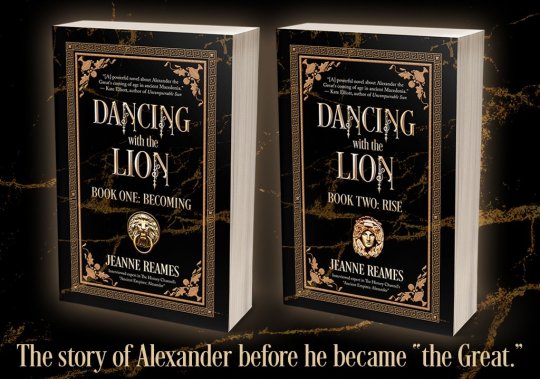
#dancing with the lion#dwtl#alexander the great#fiction about alexander the great#historical fiction
15 notes
·
View notes
Text
Werewolf Fact #71 - Book Review: Sabine Baring-Gould's The Book of Werewolves
While it may not be a "werewolf fact" of the traditional nature, it's very important when studying folklore to know and understand one's sources.
One of the very best sources for werewolf folklore - and indeed other folklore and mythology besides - is Sabine Baring-Gould's The Book of Werewolves (or The Book of Were-Wolves as he called it), written in 1865. However, like any academic/rhetorical source, it shouldn't be taken at face value. Let's dive into why it's such a useful source - and why you shouldn't always take to heart everything Baring-Gould attempts to assert.
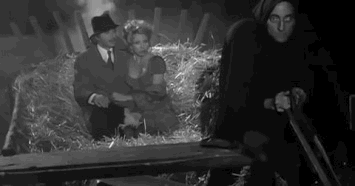
Already a scholar, Baring-Gould was a skeptical guy. It all began when, during his travels, Baring-Gould encountered several people terrified of a werewolf. He was baffled they truly believed in such a thing, and that it would stop them from wanting to traverse a road at night...
“If the loup-garou were only a natural wolf, why then, you see”—the mayor cleared his throat—“you see we should think nothing of it; but, M. le Curé, it is a fiend, a worse than fiend, a man-fiend,—a worse than man-fiend, a man-wolf-fiend.”
Baring-Gould, not intimidated, walked the road alone. However, along the way, the words of the others got to him, and he found himself frightened. The manner in which such preposterous superstition (naturally, he wasn't exactly a believer) would actually make him afraid at all made him very curious about such things and why people would believe in them...
This was my first introduction to werewolves, and the circumstance of finding the superstition still so prevalent, first gave me the idea of investigating the history and the habits of these mythical creatures.
I must acknowledge that I have been quite unsuccessful in obtaining a specimen of the animal, but I have found its traces in all directions. And just as the palæontologist has constructed the labyrinthodon out of its foot-prints in marl, and one splinter of bone, so may this monograph be complete and accurate, although I have no chained werewolf before me which I may sketch and describe from the life.
The traces left are indeed numerous enough, and though perhaps like the dodo or the dinormis, the werewolf may have become extinct in our age, yet he has left his stamp on classic antiquity, he has trodden deep in Northern snows, has ridden rough-shod over the mediævals, and has howled amongst Oriental sepulchres. He belonged to a bad breed, and we are quite content to be freed from him and his kindred, the vampire and the ghoul. Yet who knows! We may be a little too hasty in concluding that he is extinct. He may still prowl in Abyssinian forests, range still over Asiatic steppes, and be found howling dismally in some padded room of a Hanwell or a Bedlam.
Baring-Gould has his biases, but he also has an open mind about some topics, even if he's shut tighter than a bear trap on others, especially where anything scientific is concerned, as he was a big believer in the science of his time (not all of which is applicable to today). He's a complicated bag of tricks, and reading his work is quite an experience.
Whatever his biases and whatever one might think of his occasionally very judgmental and overly authoritarian words (i.e., he can sometimes think he knows better than everyone, including the people who actually lived during the time periods he's discussing), he is nothing short of phenomenal at his work of gathering and examining sources... even if he isn't always right. He contradicts his own research at least once, namely in relation to berserkers, but I won't go into all that (unless you read my edition of his book, of course; I discuss it extensively there).
He even spins some of his sources into thrilling tales. He honestly isn't bad at narration, able to paint an impressive and thrilling picture when retelling various werewolf (and other) legends...
But when dusk settled down over the forest, and one by one the windows of the castle became illumined, peasants would point to one casement high up in an isolated tower, from which a clear light streamed through the gloom of night; they spoke of a fierce red glare which irradiated the chamber at times, and of sharp cries ringing out of it, through the hushed woods, to be answered only by the howl of the wolf as it rose from its lair to begin its nocturnal rambles.
Something to note with Baring-Gould is that some of his sources are actually no longer with us. They did clearly exist, and he could access them during his own time, but they've since been lost, especially in such original formats (or they might be gone altogether). This is just another reason why Baring-Gould's work is irreplaceable as a source for many, many fields, not just werewolf studies. He cites and discusses works about many kinds of folklore, mythology, and even history, and he even provided the first English translation of the trail of Giles de Rais, a famous killer (and basis for the fairy tale Bluebeard). It's a fascinating read, even if you're just there for general folklore and mythology or if you're there specifically for werewolves or, broader spectrum, all manner of shapeshifters - he even talks a little bit about dragons!
However, when reading, bear in mind that Baring-Gould is not without his biases, as I mentioned before. He can be very judgmental of other scholars, especially from the past, but that isn't exactly uncommon even in modern scholarship. It's easy enough to read around, as long as you don't take everything he writes as fact. No scholar is perfect, no matter how impressive their work is, and that certainly includes Baring-Gould. He also approaches his work with werewolves specifically with the determination to relate them to "madmen" and serial killers, which is a consistent theme throughout the book. He will discuss werewolf legends and detail them well, but toward the end of each section, when providing his own assessment, he will generally offer how such things could be rationalized in his own mind. In doing so, of course, he does offer interesting discussion and food for thought, regardless of whether you agree with him (I agree with him at times but can also find him very disagreeable; it's like that with most everything one reads, so no shocker there). And, of course, his work even if only used for informational purposes is still impressive.
Biases is no reason to pass on what might be the best single source on these many topics. Besides, reading around potential biases is a skill everyone should learn.
One of his biggest downsides is that he doesn't provide English translations of all his quoted passages and sources. This was a problem in the original publication from the 1800s, and it continues into today with nearly all editions...
However, if you do want translations of nearly all of his quoted passages from various sources (as well as extensive annotations discussing werewolf studies, mythology, and more, and putting his scholarship into a modern context and even pointing out his errors, such as when he contradicts himself), then you need to see my edition of his work!
I personally translated and annotated The Book of Werewolves this year, and it's now available for purchase both through Amazon.com and my personal website, with a cover that's a different take on the book's original 1865 release...

Be sure to check it out at Amazon.com and my personal website!
If you buy it directly from me, I'll sign it for you, too. You can also download an ebook, if you prefer.
I assure you it's the best edition of this book you'll find. I know because I've bought nearly all of them trying to find one that's at all easy to reference. My edition even includes a bibliography that will assist you with further related reading, among other useful things. I've made sure the formatting is easily readable, so it's good for both casual reading and citation/quotation in research/academic projects. This was a lot of work, and I'm very proud of how it turned out, especially as I myself have worked with this book for years.
Final words: even with all my own personal biases about werewolves, the study of werewolf and other legends, and my opinions on some of Baring-Gould's assertions, I have to give Baring-Gould's work a 10/10 for being a must-read for anyone interested in werewolves. Trust me - if you love werewolves and studying their folklore like I do, you won't be able to put this book down, and you'll walk away with far more knowledge than you had before. Reading this book alone will give you a decent foundational knowledge of werewolf studies, while also touching upon other fields.
However, of course, I do recommend reading mine. Obviously. Especially because Baring-Gould is just so wrong about berserkers (hence, my own assertions)! But anyway.
That's all for now. Until next time, and be sure to check out my newsletter linked below!
( If you like my blog, be sure to follow me here and elsewhere for more folklore and fiction, including books, especially on werewolves! You can also sign up for my free newsletter for monthly werewolf/vampire/folklore facts, as well as free fiction and nonfiction book previews.
Free Newsletter - maverickwerewolf.com (personal site + book shop) — Patreon — Wulfgard — Werewolf Fact Masterlist — Twitter — Vampire Fact Masterlist — Amazon Author page )
#werewolf#werewolves#werewolf fact#werewolf facts#werewolf wednesday#werewolfwednesday#folklore#folklore facts#book reviews#book review#sabine baring-gould#the book of werewolves#the book of were-wolves#mythology#wolf#wolves#early modern period#lycanthrope#lycanthropes#lycanthropy#books#clinical lycanthropy#therianthropy#shapeshifting#shapeshifters#sources#sourcebooks#resources#academic writing#reference
37 notes
·
View notes
Text
the x files season 8 ficlet, 500 words, angst (with a happy ending)
A counterpart to my other piece which pondered the question, "If the brain disease was real, why might Mulder have hidden it?" - here's an exercise on the opposite side of the coin: "If the brain disease was a fabrication, how might Scully have dealt with it?"
Note: I often treat The Brain Disease as something that was real because I love the angst of it, but I can read canon either way. On this opposite side of things, I considered attempting a who and how for the fabrication of the alleged disease, but doing that adequately felt like it would take more plotting than I wanted to try to smash into a 500-word exercise, and 500 words was my aim. As with the other, take this as a riff on canon or a divergence as it suits you.
There were rumors, a man claims, and it’s a trick. Less than a trick - a joke, and they the butts of their own poor wit, because seven years on and they still underestimate the depth of commitment, of integrity, and yes, of love that makes their quintessential Mulder-Scullyness. This man is either one of them, or he is a rube and too covetous of the solve to see it. The water to his face is less satisfying than it would be to spit in the smoking man's eye, or a punch to his serpent-poet face, but it scratches at something similar.
He’s dying: it must be a joke; a lie. The medical records - alleged - they could garner a laugh. The headstone, though. The stone has given her pause. She has stood beside it before. She reads every page.
How far would he go? She thinks of his mother; of his father and hers, of her sister. She thinks of Samantha. A faceless body on his floor. A hole in his head, six more in a wall. A gulag, a railcar. A hangar. For a moment, improbably, she thinks of Diana.
She refutes the what-ifs. Doesn't hear them in the thin morning light, in the empty space at her back, the cold porcelain echoes of her own body doubled over and retching. She doesn’t feel those embers of anger, the sting of betrayal. She doesn’t fight, because fighting implies a problem, and their problems are in their past. She will not regain him to lose him again.
She is not vulnerable. She would have known.
Los Angeles, Chicago, the perfectly unremarkable highways of oh-so-many states: she was called to these places, but not to a neurologist's. She will not succumb.
He’s been thoughtful, evaluating cases for their worthiness before whisking her away from her monographs, her mother, her quiet creature comforts. They have found their balance. There is no bargaining to be done. Denial is not denial if it is true.
They have each learned to be themselves. They are each other, too.
~
She stands by that stone again, and he was the last.
~
He was not the last.
She is the mother, enigmatic; modern-day Mary with toes dipped in a blood-boiled sea and her hand on a metal bible. She is the collateral; she was relatively happy. She has paid attention to the signs, and they have said a lot, a lot, a lot. She is Starbuck, she is a medical doctor, she is Scully, so-named. She is not vulnerable.
Then a call from a hospital, We're trying to reach Dana Scully; we have you listed as an emergency contact.
She is vulnerable. She is.
~
His abdomen moves as with breath; his skin dry but warm. She lays her head down. Her ear lands on his chest, and Holy Saint Anthony, gentlest of Saints. There is a heartbeat; Who are you? A lie, a lie, his beautiful mind is untouched, and the gratitude of my heart will ever be Yours.
#x files#the x files#txf s8#x files fanfic#xf fanfic#x files fanfiction#txf fanfic#nachos writes#excising the practice demon to move on to other things
13 notes
·
View notes
Text
For Father's Day:
"The One Decent Thing I Ever Did"
This is a monograph from 2015, previously posted here some time ago, a tale of my maternal grandmother, a below-zero winter night, the New York City subway West Side express during post-9/11, that mentions my father only in passing... and it's about my father.
THE ONE DECENT THING I EVER DID.
I.
A long time ago, during a time of struggle, I did one decent thing:
I'd just gotten on the subway in Midtown Manhattan on a brutal winter night, the No. 2 uptown express, when a couple with a small child boarded the car I was riding.
They were having a very loud conversation with their child (about four years old, I think) who was crying or somehow behaving in a way that was "bad". The mother took the belt from her jeans and raised her arm to strike her child with it.
Don’t ask me why I did this, but I rose from my seat, grabbed the mother’s arm mid-swing, and said, “As long as I am on this train, you will not hit that child with that belt.” She and the child’s father were stunned into silence for a moment as I made my way back to my seat.
Immediately after I sat down, the mother and father began leveling all kinds of vitriol my way, calling me every name in the book, including all the variations of “faggot” in use at the time. I just sat there, smiled wide, laughed loud, and shined ‘em on:
“You can call me ‘faggot.’ You can call me anything you like. Because every minute you focus on me, you are not beating that child with that belt.”
The crowded train car fell silent.
II.
Yuletide, 1982. I was in the service in Germany and took leave to see my grandmother in Florida. My grandfather had passed away the previous March, and something told me to seize the chance to see Grandma while she was still with us. I was only 20, born late in life to my parents, and never got to know my grandparents in the way my older brothers did.
We were in my Grandma's airy, air-conditioned Fort Lauderdale kitchen having coffee one morning when the rest of the family had gone out for breakfast. “Would you like a little pick-me-up in your cup, dear?” I laughed. “No thanks, Gramma, it's a little early for me.” The joys of Florida.
I'd had a rough upbringing by any measure - my father was first-gen shanty Irish born in the early 1920's with a mean spirit and a violent edge, mother not Irish but still violent - but at age 20 I hadn't yet realized just how rough it had been.
“You know,” I said to Grandma, “Harold and Evelyn did the best they could. I mean, I turned out all right, right?”
Grandma leaned back in her chair, took a nice drag off one of her unfiltered Camels, and said in her declarative New England way the words that always meant Listen up, you're about to hear gospel truth:
“Well, I'll tell ya, Joe.” I was all ears.
She took another hit off of her cigarette. “I held my tongue. More than once, I held my tongue.
“But one day, your mother and father were in the front yard with your grandfather and me, and I walked up to your father and said, “Harold, I just want to tell you something. It takes a real man to beat a child with a belt.”
...Wow.
I only wish she hadn’t held her tongue!
I sipped my coffee, looked for palmetto bugs on the lanai. “Grandma,” I said, “I'm all right.”
She looked away, and I saw the colors of the rainbow in the prism of her pendant.
III.
What was I doing on the 2 train heading uptown in the bitter blistering freezing cold New York winter?
Heading “home” – that is, to one of the many rundown firetrap SRO hotels paid by the City of New York to house homeless people with HIV. The City's AIDS regulations set the policy: if you showed up at the HIV center at 30th and 8th before 7 PM on a given day, New York City was obliged to find you housing for the same night and for the next 30 days in a row at the very least.
Strange - in those days, New York would house you but not feed you, and San Francisco would feed you but not house you. Come to think of it, that's the way it is these days.
My dank, filthy, crawling with roaches and vermin crack-house "shelter" was way uptown, near 96th and Broadway. (I had always dreamed about making it to Broadway, ha ha.)
96th Street and Broadway stop was next. The train car was still silent as the parents sat sullenly and the child - Jesus, he can't be older than 3 or 4 years old, I thought - was staring at me, no expression on his little face, but eyes wide as saucers.
The train screeched to a stop. I got up and headed to the door, passing the couple with the small child and the loose belt. They were silent and did not regard me as I passed; the child, I think, might have glanced at me, but I’m not sure. I knew that after I got off the train, or after they got off the train, that poor kid was probably going to get beaten. Severely.
Out the door and onto the bone-chilling platform at 96th Street. A young woman who had witnessed the mother wield that belt came up to me and said, “I’m so glad you did that, I wanted to say something, but I was too…” Her voice trailed off as the pained look on her face finished her thought.
“I understand,” I said to her as our eyes met in that New York way of speaking the unspeakable, then made my way up the stairs into the below-zero winter breezes of the Upper West Side of Manhattan.
What the hell, I thought as I made my way out of the station, I had nothing to lose. Those were dark times, desperate days. I'm no angel. But just once, on that long-ago Number 2 train, I was granted the grace to do one decent thing.
Animal J. Smith
San Francisco, California
July 22, 2015 and June 18, 2023 v2.0

My maternal grandparents, Ed and Ethel (Schirmer) Olson, Fort Lauderdale, Florida, c. 1980
#animal j. smith#post-9/11 new york#father's day#monograph#unfiltered camels#new england matriarchs#well i'll tell ya#the gospel according to Ethel Majora Olson#rainbows are forever#just like memories of those we love#a child must never ever EVER be struck or hit with ANYTHING for ANY reason#if you see something say something
53 notes
·
View notes
Text
Things have been crazy busy over here! But metalsmithing class continues. I'm learning to flush set gemstones, which mainly means... practice. But it still Hurts me to consider just wasting silver, so when I started, I planned to keep my spacing even and colors interesting to turn it into a pendant! I started from the bottom, so I had space to saw my very first attempts off if something went egregiously wrong, but it all worked out pretty decently! I'm not going to ever start naming my projects, unless it would be really, really funny, but informally, in my heart, this piece will always be called 'learning curve'

Ruby and tourmaline in sterling silver!
And because the curse of handicrafts is that I intimately know every single thing that went wrong making it, I'm giving it away as a gift. Uh, tomorrow 😂 So last night the deadline became Real and I put the pendant on a chain and whipped up a quick box to hold it (monographed for the giftee), and used the box to experiment with getting an effect like millimeter binding on the corners. It was interesting, I would definitely try sometime similar again! And the jewelry was very fun, I enjoy this type of setting a lot, I'll DEFINITELY do that again!




#crafts#metalsmithing#box making#every time i make something with the faux m maroon suede#my memory wipes on what a pain it is to color balance#but i don't care it's maybe the prettiest material i own
47 notes
·
View notes
Text
solo talks about cbs elementary part 1
okay so yesterday I made post wondering if anyone would be interesting in hearing my cbs elementary thoughts. in the tags of that post I threatened said that one note was all it took to make this (a fleshed out series? of posts detailing pretty much everything I've ever thought about this show) happen, and for better or worse, I got that note, so instead of studying for one of my two midterms I have next week, I started this!
I am currently in the first half of season 4 but I started recording my thoughts from the very beginning. unfortunately they are very disorganized, so at least until I get to where I am currently watching I think I'm going to group these by multiple episodes. This section covers about the first half of season one
Since I've watched past the episodes I'll be talking about at first, I thought I would also add commentary if I have any hindsight to add to any of them. Any future knowledge commentary will prefaced as such.
Enjoy! and don't be afraid to leave your own thoughts if you feel so inclined, even if you completely disagree. I am insane about them so I am always ready to discuss :)
the good:
Holmes getting weird with his investigating (i.e. sniffing the walls, crawling around on the floor, licking things, etc.). It is very important to me that Holmes is, at the end of the day, a weird little guy
bitchy Holmes! Also very important to me! This also ties in with Holmes having emotions, but basically I just want Holmes to be written like the drama queen he is. (future solo thought: Elementary and JLM consistently do a good job of portraying him as such)
Avoidance of both teh stupid Watson and angry Watson trope. At this point, that's perfection
Holmes hates rich people! (future solo thought: I did not realize just how much copaganda there is in this how. it's very difficult to portray some of his more left-leaning ideals in shows like this, so I'm honestly glad for whatever scraps we can get)
I think Holmes having tattoos is a good call for a modernized version of him
crediting Watson with helping even when she hasn't done anything — this is something ACD!Holmes does as well and I think it's really funny (of course we know that Watson actually does help, just not always in obvious ways — sometimes even she's confused when Holmes thanks her, it's just funny the way he does this because he very rarely elaborates)
Encouraging Watson to make her own deductions (future solo thought: at this point in my watching this I didn't realize they were going to make Watson a detective in her own right, so this goes double now)
Telling Watson that she's necessary to his process fairly early into their relationship — we love codependent besties <3
Watson as a puzzle — not everyone likes this read of their relationship, but personally I love it
"WATSON!!!" — when Holmes yells her name like this I cannot help but be reminded of Jeremy Brett which can only do good things for my opinion of JLM's version
Holmes having daddy issues is always fun to explore, not mad at all if they decide to do more with this (future solo thought: I was very correct in this lmao)
Holmes just 🧍♂️-ing next to Watson's bed to wake her up occasionally. Again, reminds me of Brett, and it's objectively funny
"My dear Watson," I love this sentiment in the books when Holmes was saying this every other sentence, so seeing him say that at a time where it's not as common. It means a lot. To me.
Holmes' reaction to Watson calling herself his friend 🥹🥹
CIGARETTE ASH MONOGRAPH YOU WILL ALWAYS BE FAMOUS
Okay. This one needs some explaining. Holmes starts out misogynistic does go in the good BECAUSE I think his growth through that can be a really interesting and important thing to watch — it shows that even the smartest of us can hold unconscious biases that we need to do work to undo
the bad
The reworking of Watson's backstory — not all of this is bad, in fact some of it was necessary to distinguish Joan as her own character, but I do resent how Watson's tragic backstory in this meant that her doctor title is not used, and I feel like taking away Watson's injuries was missed opportunity as well
no live-in Mrs. Hudson = Watson getting relegated to house keeper duties, something that character does not do in the books. wonder what the difference is here? (future solo thought: this was a bigger issue in season one, I think. as far as I can tell, there seems to be a more even sharing of household chores as their relationship develops more, but my point for early season one stands)
Copaganda. It's lame and not in line with Holmes' characterization if you think about it for more than two seconds. I understand he works with them sometimes, but the amount of respect they have Holmes have for the police is disgusting. there have been several episodes I could barely finish because it was just so so bad
Holmes called Freud a genius in season one. girl.
12 notes
·
View notes
Note
unrelated to the current ask game but the words "kimharry x-files au" are now burned into my consciousness. no pressure to write it though!! i'm just grateful for you introducing the concept to my brain, i will be thinking about it continuously for at least the next month
PTOLEMY PRYCE: Lieutenant Kitsuragi, thank you for coming on such short notice. We see you've been with us just over two years.
KIM: Yes, sir.
PRYCE: You went to medical school but you chose not to practice. How'd you come to work for the R.C.M.?
KIM: Well, sir, I was recruited out of medical school. I saw the R.C.M as a place where I could distinguish myself.
PRYCE: Are you familiar with an officer named Harrier Du Bois?
KIM: Yes, I am.
GOTTLIEB: How so?
KIM: By reputation. He's a Koenigstein-educated psychologist who wrote a monograph on serial killers and the supra-natural that helped to catch Monty Props in ‘31. Generally thought of as the best analyst in the violent crimes section. He had a nickname at the academy... Spooky Harrier.
PRYCE: What I'll also tell you is that Yefreitor Du Bois has developed a consuming devotion to an unassigned project outside the bureau mainstream. Are you familiar with the so-called "X-Files?"
KIM: I believe they have to do with unexplained phenomena.
PRYCE: More or less. The reason you're here, Lieutenant Kitsuragi, is we want you to assist Du Bois on these X-Files. You will write field reports on your activities, along with your observations on the validity of the work.
KIM: …Am I to understand that you want me to debunk the X-Files project, sir?
GOTTLIEB: Lieutenant, we trust you'll make the proper scientific analysis. You'll want to contact Lieutenant-Yefreitor Du Bois shortly. We look forward to seeing your reports.
———
(The elevator rings and the door slides open. Kim steps out into the basement and comes to an office secluded in the back. He knocks on the door.)
HARRY: Sorry, nobody down here but the R.C.M.’s most unwanted.
(Kim opens the door to see Lieutenant-Yefreitor Du Bois sitting at his desk wearing glasses, going over some slides, as The O.O.’s ‘35 hit We Go On blasts from the radio. Walking slowly to him, Kim sees various pictures of cryptids and a poster that reads "I Want to Believe" with a phasmid on it. Harry looks up at Kim.)
KIM: Detective Du Bois. I'm Lieutenant Kim Kitsuragi, I've been assigned to work with you.
(Harry shakes Kim’s hand.)
HARRY: Oh, isn't it nice to be suddenly so highly regarded? So, who did you tick off to get stuck with this detail, Kim?
KIM: Actually, I'm looking forward to working with you. I've heard a lot about you.
HARRY: Oh, really? I was under the impression...
(He smiles.)
That you were sent to spy on me.
KIM: If you have any doubt about my qualifications or credentials, th...
(Harry stands and takes out a paper from a pile, using his telephone as a paperweight.)
HARRY: You're a medical doctor, you teach at the academy. You did your undergraduate degree in entroponetics.
(He takes off his glasses and looks at the paper.)
Nilsen’s Helix Paradox, A New Interpretation. Kim Kitsuragi, Senior Thesis. Now that's a credential, rewriting Nilsen.
KIM: Did you bother to read it?
HARRY: I did. I liked it.
(He takes a slide canister and puts it into the slide projector.)
It's just that in most of my work, the laws of physics rarely seem to apply.
47 notes
·
View notes
Text

got all bundled up and read the baby on the fire escape on a bench overlooking the sound until sunset and that was sooo nice. the book is very good and also makes me feel like if that kind of book sells I could see myself doing that type of writing. I don’t know the writer’s background so I have no idea if they were an academic first but it did feel like someone took their diss research and was like hmm you know what instead of writing an academic monograph I bet I can turn this into something people will actually want to read. so that’s something to think about. it’s much less “book about parenting!” and much more a framework for thinking about if/how motherhood and creative work can coexist, derived from close study of the lives of women artists and writers who were mothers. thoughtful and interesting!
after sunset I went to home depot to pick up paint samples (which I’ve just swatched) and target to buy a table lamp. @bottleupandexplode has been telling me for a while that my paint issues aren’t about color but about lighting and guess what: she is right. I’m using the table lamp right now instead of the horridly bright spotlight-style track lighting and it softens the yellow so much. makes the whole room feel cheerful and warm rather than screamingly bright. the bad news is: the kitchen has three horrible lighting fixtures and the other two might even be worse offenders. here’s what we’re working with:

I chose lower wattage bulbs for the weird three-headed floodlight fixture but even that wasn’t enough lol so I took one out and just have two bulbs in there. that one I can live with but it’s the blindingly bright wall light over the sink that hurts my eyes every time I look at it. you can adjust the coolness or warmth of the light (it has four settings) but you can’t turn it off and you can’t activate the overheard light without turning on the over-sink light. I took it apart this evening thinking I could maybe remove the bulb but it turns out it’s wired directly into the wall—like you’d have to cut something to turn it off. my next idea is could I cover it somehow? lol a little curtain rod in front of it to shield your eyes from its horrid light. sigh I’ll keep thinking about it. it does feel like a MAJOR win to have figured out the table lamp workaround so I’ll take that victory for today.
also here are the colors I swatched:

they’re all quite pretty shades of blue-green in real life (they photograph muddier than they look in person) but I’m not sure if any of them are really calling my name. I do think any of them would be an improvement over how blah that bathroom is right now though! so we’ll see. I might sleep on it and decide tomorrow. that ugly tile just kills me so if I could get something on the walls to distract me from it it would truly be a blessing
4 notes
·
View notes
Text
30th October
Today’s antagonist is Henry Peters, or Holy Peters, or Dr Schlessinger as he is first introduced in The Disappearance of Lady Frances Carfax. He appeared at first to be a missionary recovering from a disease he’d contracted whilst working abroad.
‘He spent his day...upon a lounge-chair on the veranda, with an attendant lady upon either side of him. He was preparing a map of the Holy Land, with special reference to the kingdom of the Midianites, upon which he was writing a monograph.’
Apparently this made Lady Carfax fawn over him like he was a sick puppy, which was essentially the point.
Peters actually faked this ‘holy missionary’ act, and targeted unmarried woman in order to steal their money. Not very charitable, in my opinion. As Sherlock describes him:
‘We are dealing with an exceptionally astute and dangerous man. The Rev. Dr. Shlessinger, missionary from South America, is none other than Holy Peters, one of the most unscrupulous rascals that Australia has ever evolved—and for a young country it has turned out some very finished types. His particular specialty is the beguiling of lonely ladies by playing upon their religious feelings, and his so-called wife, an Englishwoman named Fraser, is a worthy helpmate. The nature of his tactics suggested his identity to me, and this physical peculiarity—he was badly bitten in a saloon-fight at Adelaide in ’89—confirmed 4 my suspicion.’
The ‘physical peculiarity’ was the fact Peters had a ragged ear, which is what Sherlock used to identify him.
Sherlock and Watson find Peters and go to his house house, and his wife really seems to have faith in him, saying, “My husband is not afraid to face any man in the world.”, which is slightly extreme.
Peters enters.
‘A big, clean-shaven bald-headed man stepped lightly into the room. He had a large red face, with pendulous cheeks, and a general air of superficial benevolence which was marred by a cruel, vicious mouth.’
When he is confronted, Peters decides to turn the blame on Lady Carfax, saying she’s in debt to him, which just makes everything he does even worse. Sherlock and Watson are forced to leave, as Peters has victimised himself and taken the blame away from him. This isn’t after Sherlock finds a coffin and looks in it, expecting to find Lady Carfax, only to find an old dead woman (I can’t imagine how embarrassing that was).
But, the next day, it turns out that Lady Carfax was in a coffin, but Peters was unable to kill her (too scared) so he drugged her instead and tried to bury her alive. I don’t understand how that would be any easier, but each to their own.
#lady carfax was fine#peters' wife was also involved in the crime#but she doesn't say much so#the disappearance of lady francis carfax#henry peters#sherlockholmes#Sherlock Holmes#acd canon#acd books#ACD
5 notes
·
View notes
Text
Limit Distributions for Sums of Independent Random Variables
[Limit Distributions for Sums of Independent Random Variables, by BV Gnedenko (Author), AN Kolmogorov (Author), KL Chung (Translator). Paperback (Reprint of the 1954 Edition) - 5 Aug 2021. Publisher - Martino Fine Books (5 Aug 2021). Language - English. Paperback - 276 pages. ISBN-10 - 1684225795. ISBN-13 - 978-1684225798. Dimensions - 15.6 x 1.57 x 23.39 cm. (details thanks to Amazon)]
[Author full names: Boris Vladimirovich Gnedenko (Russian: Бори́с Влади́мирович Гнеде́нко; 1 January 1912 – 27 December 1995); Andrey Nikolaevich Kolmogorov (Russian: Андре́й Никола́евич Колмого́ров, IPA: [ɐnˈdrʲej nʲɪkɐˈlajɪvʲɪtɕ kəlmɐˈɡorəf], 25 April 1903 – 20 October 1987) (details thanks to Wikipedia)]
***
A number of years ago I set about a course of self-improvement. For me that meant reading as much as possible from works written by world-class thinkers. This list of august minds was often, though not solely, driven by Nobel Prize winners and other winners of similar or equivalent awards in other areas (mathematics, for example, where the Fields Medal and Abel Prize are the highest honors). However, I am a statistician among other things, and so I have also kept a keen eye out for important works by the giants of that field.
I am not well-acquainted with Boris Gnedenko, though his name has certainly come up from time to time over the years that I’ve both studied and practiced statistics. The name that has come up repeatedly in reverential tones is Andrey Kolmogorov, who is one of a handful of mathematicians who are credited with giving the theoretical underpinnings of statistics a solid and rigorous mathematical foundation.
The volume under review here is one of Kolmogorov’s most important publications. In it, he and Gnedenko elicit the basis and application of results like the Central Limit Theorem (CLT) and the Law of Large Numbers (LLN). These are two of the most important results in all of statistics and probability theory and the slightly more general theory of stochastic (random) processes.
I should mention that this volume was originally published in the Soviet Union in 1949 in Russian. The edition I read here was translated into English in 1954 by KL Chung, and the actual ISBN citation is this particular reprint; there are others from different time periods, and of course if one is a true purist, then one should definitely read the original Russian text. However, according to the preface, all of the formulas and other special figures in the text are actually photostats from the original monograph.
I really enjoyed this book. The writing style of Gnedenko and Kolmogorov is delightfully lofty and at times quite flowery, but their explanations of proofs and motivations for results are really first-rate. I wasn’t sure what to expect, given the high intellectual bar these gentlemen set, but I was very pleasantly surprised. Professor Chung, the translator, added quite a few helpful comments and clarifications where appropriate, but overall he seems to have let the book flow as it was originally set down. One of the Appendices was written by another legendary statistician, JL Doob, providing a bit of bridge material related to some measure-theoretic issues that arise in Chapter 1.
My only complaint (a very small one to be sure) is that there were a number of typos that remained intact despite the extensive editorial review this monograph has surely had over the past 70+ years. I wouldn’t exactly call it a super-power, but I personally seem to have a knack for finding typos and grammatical errors in even very technical material. I’ve taken photos of two of the ones I found early in the text as examples here (see below). For some reason my eye was instinctively drawn to these and others. I would thus advise the reader to pause if something seems slightly amiss – it very well might be. I’m happy to say that these errata were few and far between, and in no case do I recall them rendering the explanations or results indecipherable.
Who would enjoy this tome? Anyone who is interested in the theoretical basis for many of the classic results in modern non-Bayesian statistics. The foreword by the translator advises that a solid background in calculus is a must, and mathematical maturity a definite plus. Beyond that, the book itself is remarkably self-contained. This is likely due to the political environment in which it was written. Post-World War II was a difficult time for Soviet intellectuals since they were generally denied access to journals and results outside their own country.
Here are the two examples of typos that I detected early in the book – I think they speak for themselves, but you can be the judge:





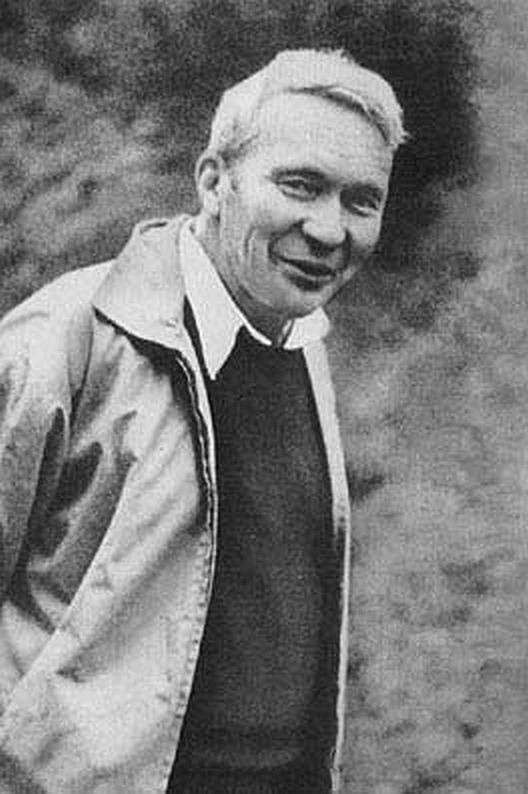
[Image credits numbered from top: (1 & 2) two pages from the book photographed by reviewer- with thanks to © publishers and estates of authors. (3 & 4) book cover front and back - with thanks to © publishers (5) Boris Vladimirovich Gnedenko - with thanks, no details of © copyright holder / photographer known (6) Andrey Nikolaevich Kolmogorov - with thanks, no details of © copyright holder / photographer known]
Kevin Gillette
Words Across Time
12 January 2024
wordsacrosstime
#kevin gillette#January 2024#wordsacrosstime#words across time#Martino Fine Books#Boris Vladimirovich Gnedenko#Бори́с Влади́мирович Гнеде́нко#Boris Gnedenko#Andrey Nikolaevich Kolmogorov#Андре́й Никола́евич Колмого́ров#Andrey Kolmogorov#Andrei Nikolaevich Kolmogorov#Andrei Kolmogorov#Fields Medal#Abel Prize#Statistics#Central Limit Theorem#CLT#LLN#Law of Large Numbers#Stochastic#Probability Theory#KL Chung#Soviet Union#WW2#JL Doob#Typos#Tome#Non-Bayesian statistics#Soviet Intellectuals
0 notes
Text
Book/Photographer research #7
Brian Skerry is a highly accomplished photojournalist and film producer who specializes in capturing stunning images of marine wildlife and underwater environments. Since 1998, he has been working as a contract photographer for National Geographic Magazine, covering a wide range of stories on every continent and in various ocean habitats. His exceptional work has earned him numerous accolades and recognition within the industry. In 2014, Brian was honored as a National Geographic Photography Fellow, followed by being named a National Geographic Society Storytelling Fellow in 2017. The same year, he was awarded the prestigious title of Rolex National Geographic Explorer of the Year. Throughout his career, Brian has contributed to multiple cover stories for National Geographic Magazine, both in the United States and internationally. Notably, he produced groundbreaking images of a sitting US President underwater during his coverage of the story "Saving Our Oceans."
Brian's work extends beyond National Geographic, as his photographs have been featured in renowned publications such as The New York Times, The Washington Post, Paris Match, Esquire, and Audubon. He has authored 12 books, including highly acclaimed monographs like "Ocean Soul" and "Shark." His latest book, "Secrets of the Whales," was released in April 2021 by National Geographic as part of a comprehensive project that includes a cover story in the magazine and a 4-part documentary film series available on Disney+, which received the prestigious 2021 Primetime Emmy Award for Outstanding Documentary.
Brian Skerry's talent and dedication have been recognized through numerous awards and honors. He is an 11-time recipient of the Wildlife Photographer of the Year competition, a distinction held in high regard. Additionally, he has received awards from Pictures of the Year International, Nature's Best, and Communication Arts. Brian is the sole photographer to have received the esteemed Peter Benchley Award for Excellence in Media. In 2010, one of his images was included in National Geographic magazine's list of the 50 Greatest Photographs Of All Time. Furthermore, in 2016, he was bestowed with the National Geographic Photographer's Photographer Award, a prestigious recognition from his peers and fellow National Geographic photographers.
Brian Skerry was one of my favorite photographers to research and learn about. As someone who loves nature and the ocean, his photography was very interesting to me. One of the things I loved most about his work was that he did not stick to the surface. He went into the deep parts of the ocean and even seemed to put himself in dangerous positions for the end shot. This can be seen in his galleries entitled sharks, squids, and Japan’s ocean Wilderness. Brian Skerry also makes sure to photograph human involvement with the oceans; such as fishing, hunting/skinning the animals, and even agricultural farming within the ocean, which he calls aquaculture. BrianSkerry is an amazing oceanic photographer and I highly enjoyed his work.

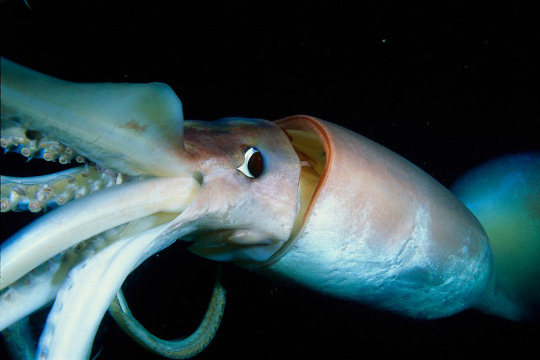


0 notes
Photo



04 March 2023
After seeing Bikini Kill live @ The Tivoli, Brisbane 03/03/2023 w/ Bec & Mei.
Page 2 -
There’s not much that can compare with a room full of women, queers, femmes, themmes, young and old singing along, word for word, with Kathleen Hanna “That girl thinks she’s the queen of the neighbourhod, I got news for you SHE IS!”
The magic of that song - being and desiring to be that girl.
The shaking floor, the dense inner-ear pressure, the upward unified motion of the crowd. The certainty and the support.
There’s something about the sometimes indiscernible lyrics, that makes me think of Humyara’s Comic about everyone putting their little yell into the world - is that heteroglossia?
It is interesting to me that so many of Kathleen Hanna’s projects, say simply -
You should do it
You can do it
Here’s how you could do it
We will support you doing it
The night had a clear intentionality. Lovingly structured to suggest -- you can do this! It’s not so hard, here are the broad steps. And if we can do it, you can too.
Page 3 -
A Gig that is a Zine recipe monograph a play with a thesis a concept gig
Art Accessibility and a Gig that is Auto-logical Self Supporting.
Chapter 1 - The opener - must select a support act that is a small local band, and I mean really quiet small.
Chapter 2 - Come on stage, be fun and cool. Be rockstars.
Chapter 3 - Mutuality of the good vibe. “I can be here because you like me”. Express gratitude for the crowd, they make it possible. The punk-band-you-love is the vibes you bring to the show.
Chapter 4 - Make mistakes, share, be scrappy, “it doesn’t have to be perfect”.
Chapter 5 - Encourage the crowd to literally just think of a band name.
Chapter 6 - “Say you’ll play a gig - then start writing songs”.
Chapter 7 - Remind them criticism will come, new bands get criticised, established bands get criticised. “Let the haters give you inspiration”. Some people won’t get what you do, you’re not making it for them.
Chapter 8 - Making your own isn’t that hard.
Chapter 9 - Support small and local, we need to lift each other up. Mention bands that you’ve supported before, Kathleen name dropped “Minimum Chips” who were a support act to them, last time they toured so-called Aus.
Chapter 10 - Get Lifting!
Chapter 11 - Reap and Repeat.
A (cool and amazing) friend of mine saw the Punk Singer 10 years ago and invited me and couple of friends around to her place, because after seeing it she wanted to start making a zine.
I don’t imagine Bikini Kill would necessarily call themselves a prog band (or maybe I mean that they wouldn’t apply a ‘prog lens’ to their own music) BUT their intentionality of texture (like when look at them without attempting to focus - I just see furious, exciting, incomprehensible woman) puts me in mind of it. When I let my eyes unfocus, and I stop trying to grasp the untamed lyrics - I see, or receive, the sexy, angry women-supporting-women of it all, and it washes inexorably over me. Maybe is a Prog music lens? Maybe it’s Maybeline? Maybe it’s McLuhanism? I love the efficiency and directness of the message I’m receiving in these unfocused moments. How it self supports - how in granularity and in wide shot - word and deed - Bikini Kill says Yell as Well.
Hot Dog Theory of Art Accessibility.
Art accessibility is an enormous topic, but I think about it as a hot dog. Being that it can be tackled from either end. Highly glossy, easily discoverable, eminently digestible, polished products at one end, that say “I’m for everyone!” - think streaming a MCU movie from Disney+ - whose tricks and technology are almost indistinguishable from magic; at the other end, zines. The accessibility of making zines (and by extension art and by extension anything), is their incredible power. That anyone would look at a zine I’ve made and think - “but, I could make this” - is for me, a zines‘ greatest power.
Page 1 -
Juniper of the support act to Bikini Kill - Queerbait - at the Tiv. They were great, you should check them out!
#grenade journaling#talzir#Bikini Kill#Queerbait#Queerbait the Band#march 2023#2023#hot dog theory of art accessibility#the tivoli#the tivoli brisbane#woolf pack#yell as well#mcluhan#the punk singer#kathleen hanna#humyara#heteroglossia#rebel girl#prog music#I dunno have I ever used a theory correctly in my whole life#nope#feminerds#written the plane to mangawhai#grenade journal
7 notes
·
View notes